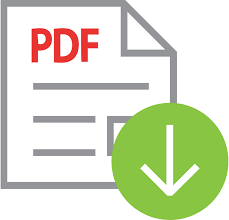Analisis Perilaku Menyakiti Diri Sendiri pada Anak Gangguan Spektrum Autisme
 ), Rahmahtrisilvia Rahmahtrisilvia(2), Arisul Mahdi(3), Gaby Arnez(4),
), Rahmahtrisilvia Rahmahtrisilvia(2), Arisul Mahdi(3), Gaby Arnez(4), (1) Universitas Negeri Padang
(2) Universitas Negeri Padang
(3) Universitas Negeri Padang
(4) Universitas Negeri Padang
 Corresponding Author
Corresponding Author
Copyright (c) 2024 Jurnal Penelitian Pendidikan Khusus
DOI : https://doi.org/10.24036/juppekhu.v12i2.130527
Full Text:
 Language : en
Language : en
Abstract
Keywords
References
Mark Durand, V., & Crimmins, D. B. (1988). Identifying the variables maintaining self-injurious behavior. Journal of Autism and Developmental Disorders, 18(1), 99–117.
Minshawi, N. F., Hurwitz, S., Fodstad, J. C., Biebl, S., Morriss, D. H., & McDougle, C. J. (2014). The association between self-injurious behaviors and autism spectrum disorders. Psychology Research and Behavior Management, 7, 125–136. https://doi.org/10.2147/PRBM.S44635
Mutiaranisa, A. G. (2023). the Efevtivity of ABC Analysis Functional in Cognitive Restructuring to Overcome Academic Procrastination of Unesa Psychology Student. Character Jurnal Penelitian Psikologi, 10(03), 481–495.
Noya, J. E., & Ambarwati, K. D. (2018). Gambaran interaksi sosial anak autis di sekolah inklusi Multi Talenta Samarinda. Jurnal Psikologi Perseptual, 3(2), 65–78.
Priyatni, E. T., Suryani, A. W., Fachrunnisa, R., Supriyanto, A., & Zakaria, I. (2020). Pemanfaatan Nvivo dalam Penelitian Kualitatif. Universitas Negeri Malang.
Rahmahtrisilvia, R. (2015). Peningkatan Kemampuan Komunikasi Pada Anak Autistik Menggunakan Dukungan Visual. Pedagogi: Jurnal Ilmu Pendidikan, 15(1), 128. https://doi.org/10.24036/pedagogi.v15i1.5254
Statistik, B. P. (2019). Statistical yearbook of Indonesia. Badan Pusat Statistik. Jakarta. ISSN/ISBN, 126, 2912. Autisma
Theodora, D. E., & Mahabbati, A. (2019). Asesmen perilaku fungsional pada perilaku menyakiti diri sendiri anak autis di SLB Dian Amanah Yogyakarta. JPK (Jurnal Pendidikan Khusus), 15(1), 58–67. https://doi.org/10.21831/jpk.v15i1.28227
Yuwono, I. (2015). Penelitian SSR ( Single Subject Research. In Analisis Standar Pelayanan Minimal Pada Instalasi Rawat
Jalan di RSUD Kota Semarang (Vol. 3).
Zellatifanny, C. M., & Mudjiyanto, B. (2018). Tipe penelitian deskripsi dalam ilmu komunikasi. Diakom: Jurnal Media Dan
Komunikasi, 1(2), 83–90.
 Article Metrics
Article Metrics
 Abstract Views : 48 times
Abstract Views : 48 times
 PDF Downloaded : 26 times
PDF Downloaded : 26 times
Refbacks
- There are currently no refbacks.
Copyright (c) 2024 Jurnal Penelitian Pendidikan Khusus

This work is licensed under a Creative Commons Attribution-ShareAlike 4.0 International License.



